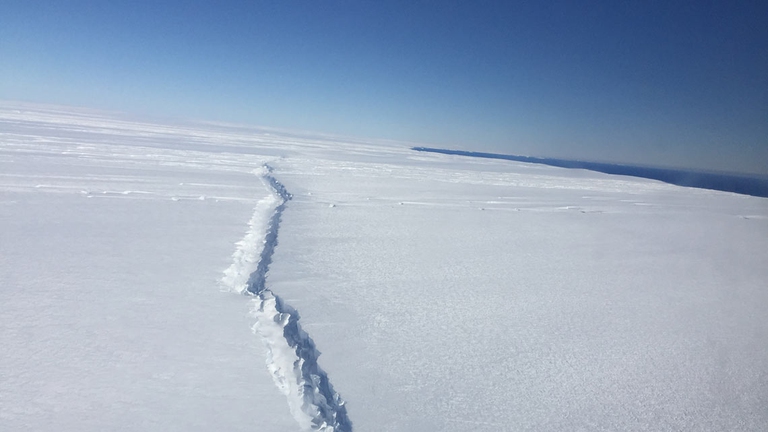
A group of experts in Tokyo suggested pouring radioactive water from Fukushima into the open sea. A marine biochemist explains the consequences of this absurd decision.
It finally broke off. The iceberg A68, twice the size of Luxemburg, is no longer part of Antarctica’s Larsen C ice shelf, which could also collapse.
A huge iceberg – twice the size of Luxemburg – collapsed from the Larsen C ice shelf on 12 July, as expected by experts. Now it’s adrift in the Weddell Sea, which is part of the Atlantic Ocean in the Antarctic area. The news was released by researchers of the Swansea University, Wales, which has been monitoring the phenomenon since 2014. The iceberg has been called A68 and is one of the largest ever observed, with a surface of more than 5,800 square kilometres, a thickness of 200 metres (of which 30 are above sea level) and a weight of 1 trillion tonnes.
The Larsen-C rift opening over the last 2 years from #Sentinel1 pic.twitter.com/MT9d3HAw1M
— Adrian Luckman (@adrian_luckman) 31 gennaio 2017
The new iceberg, which will lead to revise the world’s map, broke off the Larsen C ice shelf and has been photographed from the Santinel 1 satellite launched with the Copernicus programme promoted by the European Space Agency (ESA) and the European Commission, as well as from the Aqua satellite of NASA (National Aeronautics and Space Administration). Now the ice shelf is 12 per cent smaller than before the calving – reaching its lowest extent in 11,700 years.

According to researchers the Larsen C ice shelf could now face the same tragic fate of the platforms Larsen A – collapsed in 1995 – and, most importantly, Larsen B – which disintegrated after a similar collapse. The iceberg could fragment in smaller pieces, some of which could move towards warmer waters.
“The calving of this large iceberg could be the first step of the collapse of Larsen C ice shelf, which would result in the disintegration of a huge area of ice into a number of icebergs and smaller fragments,” explained David Vaughan, a glaciologist and the director of science at the British Antarctic Survey (BAS), in January. Even if the research is aimed to document the effects of global warming in Antarctica, the glaciologists of MIDAS (a British research project) claim this is a natural event that isn’t necessarily linked to human-driven global warming, but still could bring about a series of risks given the unstable nature of the ice shelf.
Siamo anche su WhatsApp. Segui il canale ufficiale LifeGate per restare aggiornata, aggiornato sulle ultime notizie e sulle nostre attività.
![]()
Quest'opera è distribuita con Licenza Creative Commons Attribuzione - Non commerciale - Non opere derivate 4.0 Internazionale.
A group of experts in Tokyo suggested pouring radioactive water from Fukushima into the open sea. A marine biochemist explains the consequences of this absurd decision.
The decline in grey and humpback whales in the Pacific and Atlantic Oceans has been traced to food shortages caused by rising ocean temperatures.
The United Nations has launched a major international alliance for ocean science, undertaking a mission close to all our hearts.
The cargo ship that ran aground off the coast of Mauritius on 25 July, causing incalculable damage, has split in two and its captain has been arrested.
The largest coral reef in the world is severely threatened by climate change, but researchers are developing strategies that could contribute to saving the Great Barrier Reef.
Seychelles have extended its marine protected area, which now covers over 400,000 square kilometres, an area larger than Germany.
Norwegian oil giant Equinor had pulled out of drilling for oil in the Great Australian Bight, one of the country’s most uncontaminated areas. A victory for activists and surfers who are now campaigning for the area to be protected forever.
30 per cent of the planet needs to be protected to stop precipitous species decline. The UN has set out its aims for the the COP15 on biodiversity scheduled for Kunming, China in October.
Ocean warming has risen to record highs over the last five years: just in 2019 the heat released into the world’s oceans was equivalent to that of 5-6 atomic bombs per second. The culprit, no doubt, is climate change.








